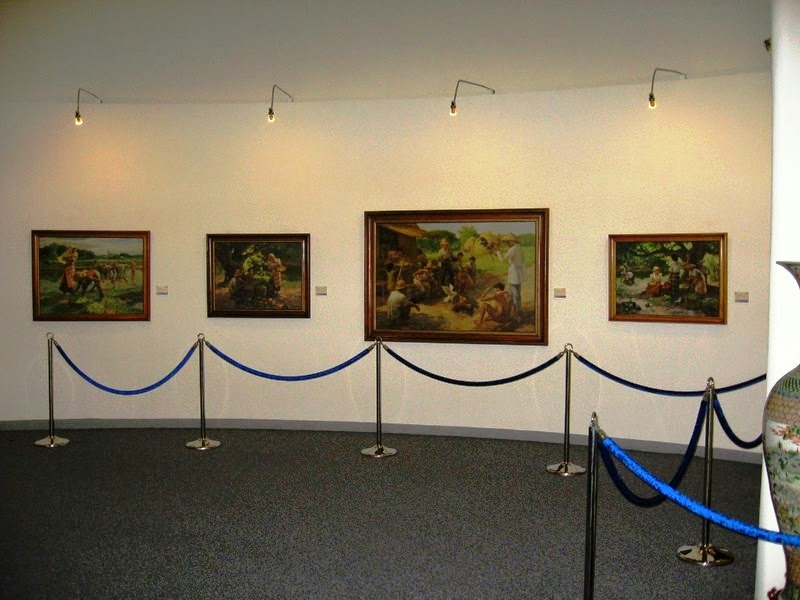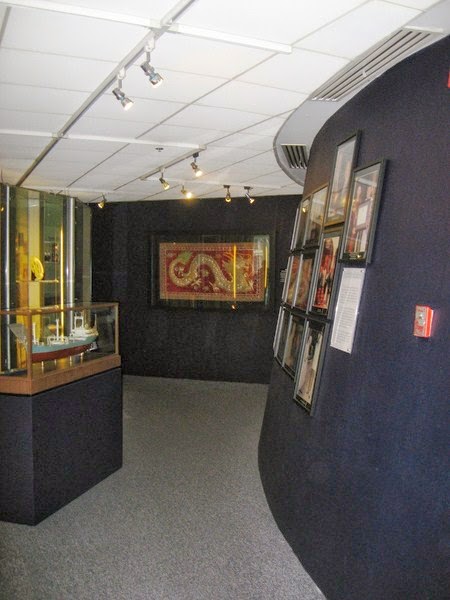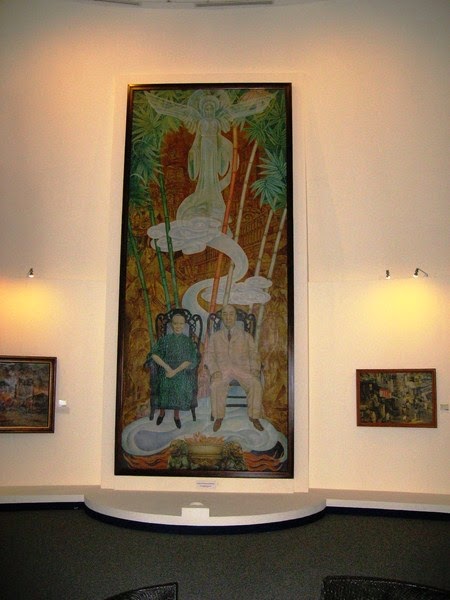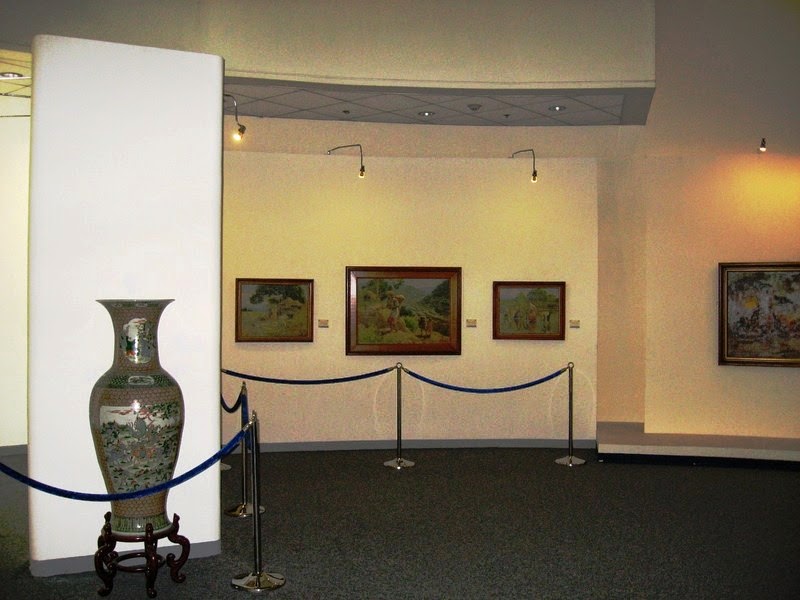Jandy and I, together with United Tourist Promotions (makers of EZ Maps) employees Bernard Gonzales and Rodel Vivas, were on our way to Baguio City when nighttime caught up with us in Gerona in Tarlac. Already hungry, we decided to stop at Fresh Catch Isdaan for dinner. This open restaurant was one huge koi-filled fishpond with “floating” (actually on stilts) cabanas with tables for diners, all connected by bamboo walkways. All over the place are huge, eye-catching statues of Buddhas, mermaids, monkeys, dinosaurs and crocodiles; Disney characters; noted Filipinos (Corazon Aquino, Joseph Estrada, Jaime Cardinal Sin, Ninoy Aquino, etc.) as well as Marvel comic characters such as Batman, Iron Man and the Incredible Hulk.
| Fresh Catch Isdaan |
Food served here was mostly Filipino, the restaurant being part of the Barrio Fiesta Restaurant Group. Its signature dishes include chicken tinupig, sisig, adobong pusit, bulalo, manok sa gata, kare-kare, sinampalukan, sizzling tanigue, hototai (mixed vegetable soup), Bicol Express, pinakbet, inihaw na liempo, buko pandan, binagoongang baboy, sinigang na hipon, lumpiang shaghai, fried chicken or porkchop, lechon kawali, among others. While waiting for our order to arrived, I went about exploring the place. There were subli dancers as well as roaming singers with guitars serenading guests, all dressed in approapriate Filipiniana attire.
| Koi-filled fishpond |
| Tacsiyapo Wall |
One big surprise was Tacsiyapo Wall, a cool and neat though not original idea which is bound to bring tourists, looking for stress relief, to this place. Here, you can release your anger by throwing crockery such as cups (PhP15), bowls (PhP18), plates (PhP35), pitchers (PhP100), vases or even a broken TV (PhP2,000) at a wall. According to the attendant, to get the feel of it, you need to shout “tacsiyapo!” (A Kapampangan word meaning, at best, “shame on you” or, at worst, similar to the Tagalog P…I….). Before throwing, you can choose at a selection of targets on the wall such as “Taksil!,” “Sip-sip!,” “Bolero!,” “Bolera!,””Ingitera!,” “Tsismosa!,” etc.
Fresh Catch Isdaan: MacArthur Highway, Brgy. Salapungan, Gerona, 2302 Tarlac. Tel: (045) 931-2196.










.jpg)
.jpg)
.jpg)




















